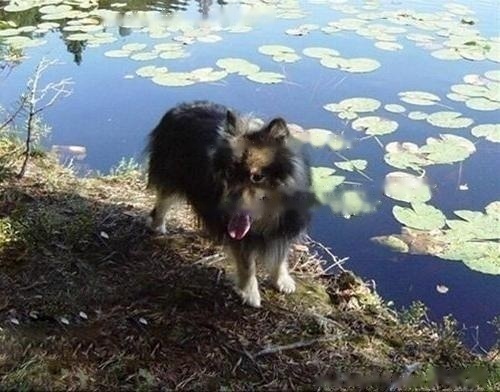is an ecto-permanent parasite. There are two types of lice that live on the human body, human lice and pubic lice. Human lice are divided into two subspecies, human lice and human head lice.

Finnish Lapphound
1. Morphology
The human louse is long and narrow, with a flat dorsal and ventral body. Up to 4.4mm, slightly smaller. Male louse ends are approximately V shaped, and female louse ends are W shaped.
The head is rhombus-shaped and has a pair of antennae. The three thoracic joints have three pairs of feet, and the finger-like tibial process on the inner side of each tibia is opposite to the claw at the end, forming a powerful grasper.
Head lice are slightly smaller and darker than body lice.
Pubic lice are short, wide and crab-like.
2. Life History and Ecological Habits
Egg————Nymph————Adult
1.) Parasitic parts of human head lice: hair, which lay eggs at the root of the hair, mostly behind the ears.
Human lice: the seams and pleats of intimate clothing, and lay their eggs on the fabric fibers of clothes and trousers.
Pubic lice: pubic hair, anal hair. Other parts are more common in eyelashes, which lay eggs at the base of the hair.
2.) Habits and blood-sucking characteristics related to disease transmission; sensitive to temperature and humidity; fast crawling.
Oval oval, white, commonly known as scorpion. Eggs adhere to hairs or fibers, and their free ends are covered with stomata and cells.
3. Transmission of disease
Epidemic typhus is caused by Rickettsia Platts
4 , prevention and control
Strengthen health education, pay attention to personal hygiene, and achieve four diligents
lice control measures: scalding, freezing, poisoning (20% alcohol soaking liquid or 0.01% permethrin)
The pathogen of relapsing fever is Borrelia obeisi
commonly known as fleas and clams. Parasitic on the body surface of warm-blooded animals.
1. Shape Left and right flat. The head is triangular, with a pair of antennae hidden in the antennal fossa. The mane, hair, and comb all over the body grow backward. The feet are strong and developed, good at jumping.
2. Life history
The life history of fleas is holometabolism, including four stages: egg, larva, pupa and adult.
The pupa in the cocoon needs external stimulation to emerge. Such as the vibration of the air, the disturbance and contact pressure of animals approaching, and the increase of temperature, etc., can induce the adults to break out of the cocoon.
3. Relationship with disease
In addition to harassing blood-sucking and parasitism, fleas can also spread a variety of diseases: 1. Plague plague Bacillus 2, typhus typhus rickettsia 3, taeniasis, Taenia parvum, Taenia canis
4, control
1.) 10%---30% Baibu + wine to make Baibu tincture to kill adults and nymphs
2.) Lice shampoo
![[Dog Training 5] The training method of pet dog dining etiquette](/static/img/12192/12192_1.jpg)




